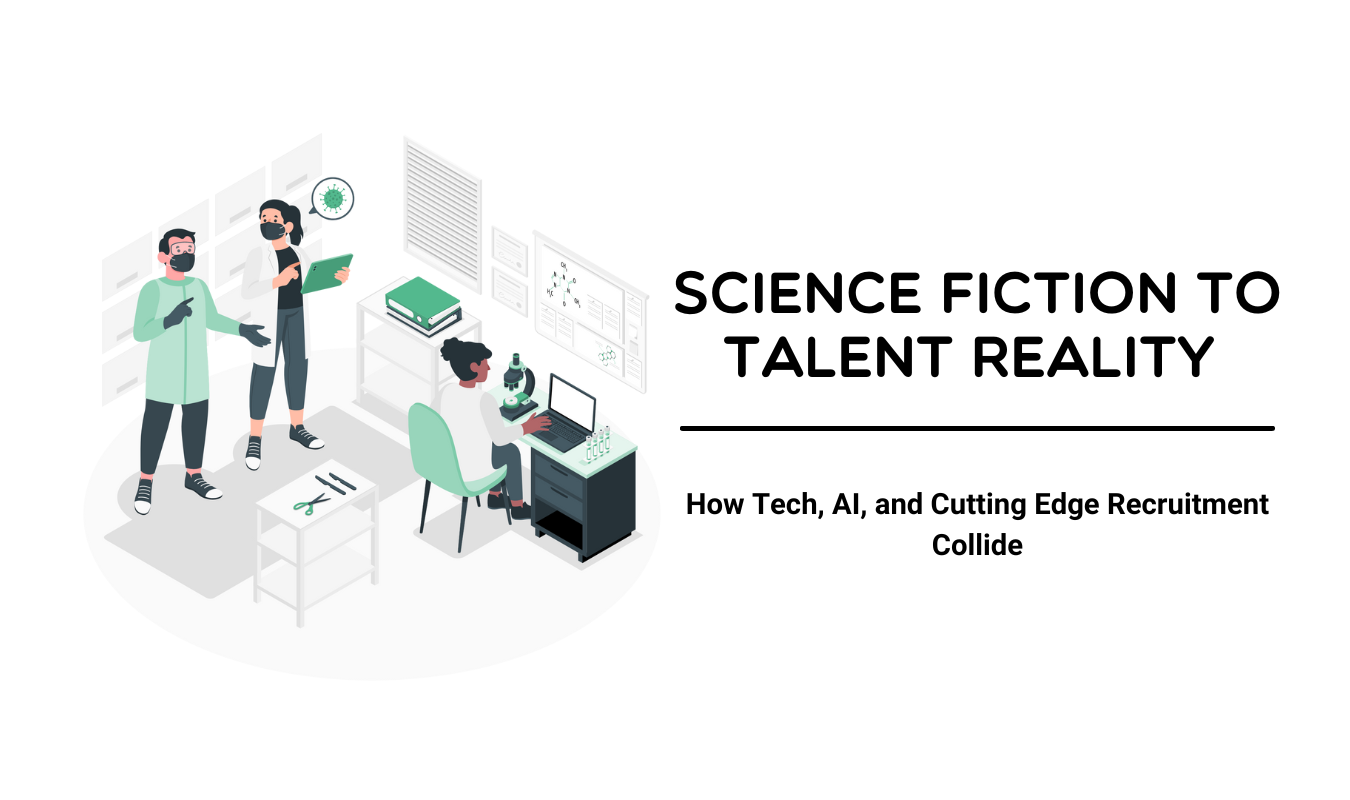Science Fiction to Talent Reality -How Tech, AI, and Cutting Edge Recruitment Collide
What are some of the key concerns and benefits to using AI in recruitment technology?

The advent of technology and artificial intelligence (AI) has revolutionized numerous industries, and recruitment is no exception. With the help of advanced tools and algorithms, recruiters have found new ways to streamline their processes and identify the best-fit candidates efficiently. However, as with any technological advancement, there are potential pitfalls to consider. In this article, we will explore how tech and AI have made life easier for recruiters, while also discussing the precautions they need to take. We’ll walkthrough the importance of Talent Intelligence (TI) and how it can shape the future of recruitment.
Streamlining Recruitment Processes:
Technology and AI have significantly enhanced the recruitment process, gone are the days of manually sifting through stacks of resumes and conducting countless interviews. AI-powered algorithms can now analyse large volumes of applicant data and shortlist candidates who possess the desired qualifications and skills.
Automated resume screening tools have emerged as a game-changer, allowing recruiters to filter applications based on specific keywords and qualifications. This helps save valuable time and resources, allowing recruiters to focus on engaging with high-potential candidates. Additionally, AI-powered chatbots and virtual assistants have simplified candidate interactions by providing quick responses and handling basic queries, enhancing the overall candidate experience.
However, it is essential for recruiters to approach these advancements with caution as discussed below. Engagement remains just as important.
Potential Pitfalls and Precautions:
While technology and AI have undeniable benefits, there are potential risks that recruiters must be mindful of. One significant concern is the potential for algorithmic bias. Some algorithms are trained using historical data, which may inadvertently incorporate biased hiring practices or prejudices. This can result in unfair outcomes, perpetuating existing inequalities. Recruiters must be vigilant in reviewing and auditing the data used to train algorithms to prevent bias and ensure fair and inclusive hiring practices.
Another challenge is the loss of personal connection, undermining the human touch. While automation speeds up the process, it can also lead to a lack of human interaction, making candidates feel detached and unimportant. Recruiters need to strike a balance by incorporating personalized communication and leveraging technology as a tool to enhance, not replace, human interaction.
Maintaining data privacy and security is yet another critical concern. With the vast amounts of personal and sensitive information being collected during the recruitment process, it is essential to implement robust data protection measures. Recruiters must ensure compliance with relevant data protection regulations and invest in secure systems to safeguard applicant data.
Solutions and the Way Forward:
To address these potential pitfalls, recruiters should prioritize ethical AI practices. This involves regularly auditing algorithms for bias, fostering diversity within recruitment teams, and involving human oversight in decision-making processes. Transparency is key, and candidates should be informed about the use of AI and the criteria it evaluates.
Recruiters should also invest in training and upskilling their teams to effectively utilize AI tools and strike the right balance between automation and human touch. By combining the efficiency of AI with the empathetic skills of recruiters, a powerful synergy can be achieved, ultimately enhancing the candidate experience. Boiled down to its core, recruitment is very similar to a sales function, selling the job to candidates and selling candidates to your hiring managers. An example of something I’ve done myself to utilise AI in sales – when facing writer’s block or a lack of great idea, tools like ChatGPT or Copy.ai work well to help structure your engagement. Not to say you should copy and paste these templates but rather use them as a skeleton for your own customised correspondence. We’ve seen a decrease in time taken to follow up and at the same time, a decrease in response times as well!
When utilized correctly, talent intelligence emerges as the way forward. It involves harnessing the power of data and AI to gain insights into candidate behaviour, preferences, and skillsets. By leveraging talent intelligence, recruiters can make more informed decisions, tailor their recruitment strategies, and build stronger talent pipelines.
Technology and AI have undoubtedly made recruitment processes more efficient, enabling recruiters to focus on higher-value tasks. However, caution is necessary to mitigate potential pitfalls such as bias and loss of personal connection. By prioritizing ethical practices and embracing talent intelligence, recruiters can leverage technology to create a more inclusive and effective recruitment landscape.
Solutions like Vita’s Talent Intelligence CRM do exactly this.
As a quick introduction, Vita’s TI helps reactivate past applicants for current hiring, identifying relevant talent from within your database and guiding engagement, within seconds. Not only does this streamline sourcing, reducing candidate acquisition costs, this can also be applied to screening active applicants! Larger enterprises get hundreds of applicants per role and it’s a hassle narrowing this list down and sieving out irrelevant profiles. Learn how to cross-reference candidates across positions as well to ensure candidates are matched to roles that suit them best, moving away from a candidate to job match but more of a candidate to company match! Get in touch to explore or check us out!
